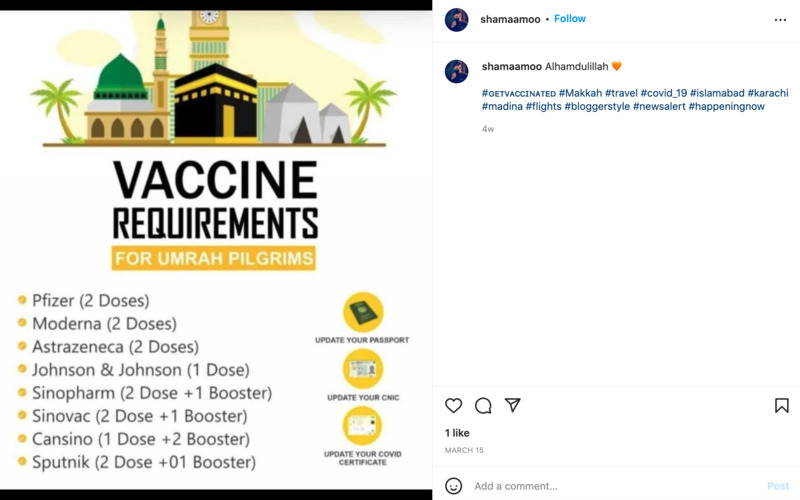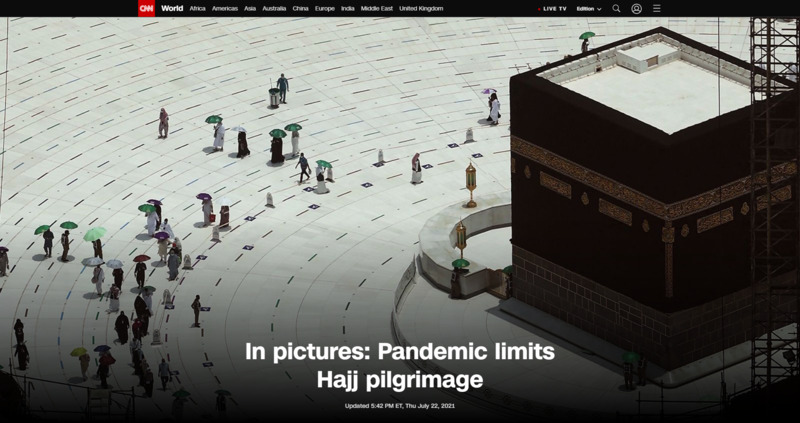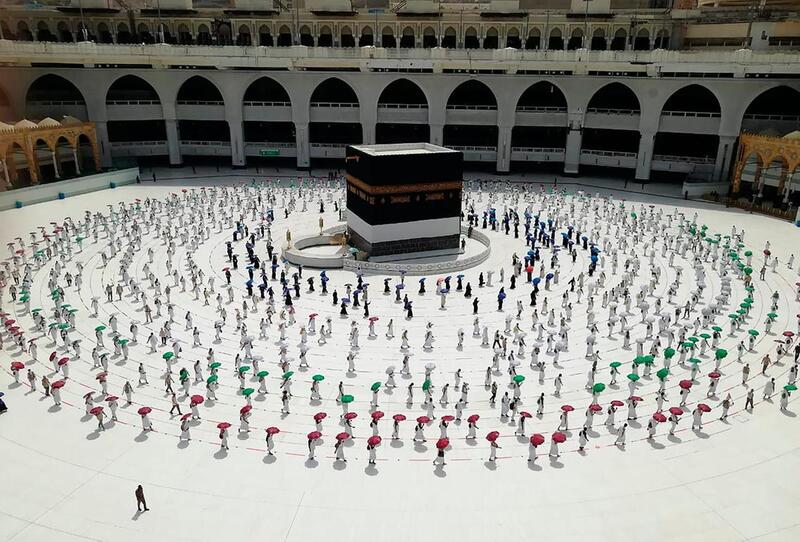Items
topic_interest is exactly
pilgrimage
-
 2022-03-15
2022-03-15Vaccine Requirements for Umrah Pilgrims
This is an Instagram post by shamaamoo. This is a PSA for vaccine requirements for those going on a pilgrimage. It shows a variety of vaccines that are accepted for this, as it includes many people from around the world. Pilgrimages have been affected by the virus since they include lots of travel and spaces with lots of people in one area. -
 2021-07-22
2021-07-22Hajj pilgrimage 2021
This CNN article/photos show how the Hajj pilgrimage to Mecca is impacted by COVID for the second year in a row. The article states that, typically, 2 million Muslims worldwide go to Mecca for the Hajj, but this year, it is expected that only 60,000 residents will attend. Worshippers must be fully vaccinated and nonresidents are not allowed to attend. -
 2020-11-09
2020-11-09Covid-19 and Religious Observance
Religious observance was one of the many aspects of daily life affected by the COVID-19 pandemic. In my home country of Bahrain, congregational prayers were prohibited in mid-March, in an effort to slow the spread of the virus. The Friday prayers were restricted to only a single mosque, Bahrain’s largest. Under normal circumstances, Muslim congregants would stand shoulder to shoulder in prayer. This was no longer the case as seen in the photo, social distancing and mask wearing was enforced. The Islamic call prayer (the Azan) was altered, the normal line summoning the faithful to prayer “come to prayer, come to good deeds” was instead replaced with the line “pray in your homes” (as seen in the attached video, which I recorded in Bahrain on). It was surreal hearing this for the time. The Covid-19 pandemic was the first event, at least in my lifetime, where this was done. Historically, this had precedents in times of plague. Moreover, the Muslim Hajj pilgrimage, which draws millions to the city of Mecca in Saudi Arabia every year, was this year limited to a symbolic 1,000 pilgrims. Having attended the Haj myself a decade earlier and been in the midst of the human masses that descend on Mecca, it was very strange to observe the images of the few socially distanced pilgrims which undertook the Hajj in late July 2020.
